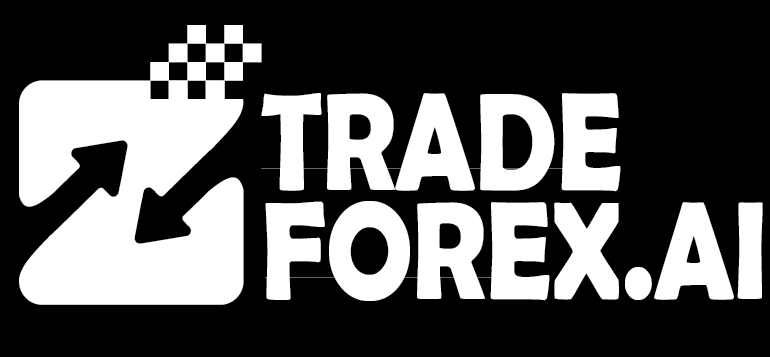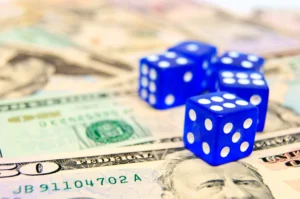In 2025, prediction markets have become a global phenomenon. From seasoned Wall Street traders to casual political observers, everyone seems intrigued by the idea of trading on future events. These markets offer the promise of profit through probability. But they also raise a critical question: are prediction markets a smart trading strategy, or are they just another modern form of gambling?
As more people explore prediction market trading, opinions are divided. Some view these platforms as powerful tools for forecasting and financial decision-making. Others see them as dressed-up casinos operating under the label of finance. The truth likely lies in how these markets are used—and more importantly, in the mindset of the user.
Let’s explore what prediction markets really are, how they work, and whether they deserve a place in your trading plan or should be left to the gamblers.
Understanding Prediction Markets
At their core, prediction markets are platforms where participants buy and sell contracts based on the likelihood of specific future events. Each contract represents a binary outcome—yes or no. If the event occurs, the contract settles at full value. If it doesn’t, the contract becomes worthless. Prices typically range between 0 and 1 dollar and represent the market’s collective estimate of the event’s probability.
For instance, if a contract related to an interest rate hike is trading at 0.65 dollars, the market believes there is a 65 percent chance of that outcome happening. As new data enters the system—be it economic reports, political developments, or global news—the contract prices adjust in real time, making prediction markets incredibly responsive to changing information.
In 2025, platforms such as Kalshi, Polymarket, and others have enabled both retail and institutional participation in event outcome trading. These platforms host contracts on a wide range of topics, including elections, inflation, climate events, financial indicators, and geopolitical decisions. As the financial world becomes more unpredictable, the appeal of trading probabilities instead of assets has grown.
How Prediction Markets Attract Strategic Traders
Many traders argue that prediction markets are not only legitimate financial tools but also represent a sophisticated evolution of how information can be monetised. Unlike traditional asset trading, these markets revolve around real-world events rather than company performance or commodity supply chains. That makes them unique in both structure and application.
Smart traders use prediction markets as part of a broader data-driven approach. By analysing public data, media sentiment, and polling trends, they identify mispriced contracts and place calculated trades. This method isn’t about luck—it’s about edge. The market, through its participants, acts as a collective forecasting engine. When large numbers of informed people trade contracts, the resulting prices often reflect a highly accurate consensus.
Additionally, prediction market trading allows for hedging specific risks. A trader worried about political instability can offset potential losses in their equity portfolio by buying contracts tied to election outcomes. In this way, prediction markets serve as alternative instruments for managing macro risk—something traditional markets can’t always do efficiently.
What makes this strategy smart is its reliance on data, probability, and real-time analysis. The goal isn’t to guess right but to find opportunities where the crowd is wrong and the market price is misaligned with reality.
The Thin Line Between Trading and Gambling
Despite their sophistication, prediction markets often resemble gambling in the eyes of many observers. Critics argue that these platforms encourage emotional decision-making and speculative behaviour. The concern is valid—after all, many users place bets based on personal beliefs rather than evidence.
The biggest issue arises when participants treat contracts like casino chips rather than calculated trades. When people bet on a candidate simply because they support them—or short a policy contract because of bias—they introduce subjectivity into what should be an objective market. This is where the line between trading and gambling becomes blurred.
Another problem lies in overconfidence. Traders often assume they have special insight into events when, in reality, they are reacting to the same information as everyone else. Without risk management and emotional discipline, prediction market activity can quickly spiral into impulsive speculation.
Some traders also chase losses, doubling down after failed outcomes. Others ignore clear indicators because they’re emotionally attached to a belief. These are classic signs of gambling behaviour—where the goal becomes recovery rather than consistency.
What Makes Prediction Markets a Risky Bet for Some?
The risks in prediction markets don’t stem from the system itself, but rather from how users interact with it. The platforms are neutral—they allow for both strategic and reckless behaviour. It’s the user who defines the nature of the trade.
Many participants fall into the trap of treating these markets as entertainment. They check contract prices like sports scores and jump into positions based on Twitter threads or viral headlines. Without a trading plan, such behaviour is nothing more than a gamble.
A particularly risky trait is overtrading. The low cost of entry on many contracts gives users a false sense of control. But small positions quickly add up. In markets with fast price movement, losses can accumulate even faster.
Lack of education is another concern. Many newcomers don’t understand how probabilities translate into returns. They enter trades with no knowledge of expected value or payout calculations. In such cases, even good intentions can lead to poor outcomes.
This behaviour undermines the credibility of prediction markets and keeps many institutional players cautious. Until more users adopt a structured, informed approach, the perception of gambling will persist.
Prediction Market Trading in the Institutional World
While prediction markets may seem like retail-focused tools, institutional interest is growing in 2025. Hedge funds, think tanks, and policy analysts are increasingly exploring these platforms—not for speculation, but for insights.
Institutional players use prediction markets to gauge public sentiment, monitor event risk, and test hypotheses. For example, a macro fund might track pricing on inflation-related contracts to guide bond allocations. A political risk firm might analyse contracts related to legislation to assess lobbying strategies.
The key advantage here is information. By observing price movements and liquidity levels, institutions can access real-time signals about global uncertainty. This makes prediction markets powerful forecasting engines when used correctly.
To protect themselves from the perception of gambling, institutions often use proprietary models to evaluate prediction market contracts. They treat them like any other financial instrument—an input into a broader decision-making framework.
This shift toward professionalism is slowly changing the narrative around prediction markets. It proves that when used strategically, these platforms can serve a meaningful role in financial analysis and risk management.
Building a Prediction Market Trading Strategy
For those who want to trade prediction markets with discipline, several principles apply. The first is research. Each trade should be based on hard data, not assumptions. Whether it’s poll results, economic trends, or geopolitical news, traders must gather information before entering a position.
The second principle is risk management. No single event should hold the power to wipe out your account. Prediction markets often involve binary outcomes, which means either full gain or full loss. Proper position sizing and diversification are critical.
Timing also matters. Entering early when prices are stable allows for better risk-reward setups. As events draw closer and volatility increases, the opportunities shift. Knowing when to enter and exit is just as important as selecting the right contracts.
Consistency and patience are also important. The goal is not to win every trade but to maintain a process. Traders who journal their decisions, review outcomes, and refine their strategies tend to outperform impulsive participants.
Over time, this disciplined approach builds skill. And in prediction markets—just like in any other financial environment—skill is what separates professionals from speculators.
Regulation, Legitimacy, and the Path Forward
One of the biggest drivers of credibility in 2025 is regulation. Platforms like Kalshi have received approval from financial regulators in the United States. This sets them apart from offshore or decentralised platforms that operate in legal grey areas.
Regulated platforms offer greater transparency, better consumer protections, and clearer rules. They also attract institutional capital, which stabilises markets and reduces manipulation.
However, the regulatory landscape is still evolving. Some governments view prediction markets as financial innovation. Others see them as gambling instruments and impose strict limits.
This fragmented regulation affects everything from tax treatment to access. Traders must remain informed about legal guidelines in their country. Using a regulated platform can mitigate legal risk and improve the quality of trading.
As prediction markets continue to grow, collaboration between regulators, platforms, and users will shape their future. A well-regulated market creates room for innovation, education, and legitimacy—pushing prediction markets further into the realm of smart trading strategy.
The Final Word: Strategy or Speculation?
Prediction markets in 2025 reflect the trader’s mindset more than the market’s design. Used wisely, they offer real strategic value. Misused, they become expensive distractions.
Traders who rely on data, probabilities, and defined systems can integrate prediction markets into a serious portfolio strategy. They can hedge real-world risks, test global narratives, and gain insight unavailable through traditional means. This is where event outcome trading shines.
But those who chase headlines, trade emotionally, or lack basic risk control will fall into the gambling trap. Their losses won’t be due to the market—but to their own decisions. That’s the harsh but honest truth.
In the debate over trading vs gambling, prediction markets force each participant to decide. The same tools that support research and strategy can also enable impulse and speculation. The choice belongs to you.
Are you making informed trades—or just betting on belief?
The answer to that question will define your success in the world of prediction markets.
Read here to learn more about “Scalping with Small Account: Smart Strategy That Works“.

I’m Chaitali Sethi — a seasoned financial writer and strategist specializing in Forex trading, market behavior, and trader psychology. With a deep understanding of global markets and economic trends, I simplify complex financial concepts into clear, actionable insights that empower traders at every level. Whether it’s dissecting winning strategies, breaking down market sentiment, or helping traders build the right mindset, my content bridges the gap between information and implementation.




